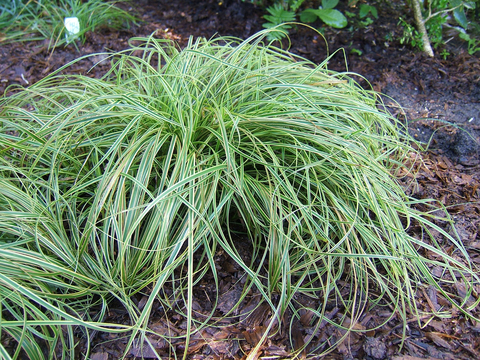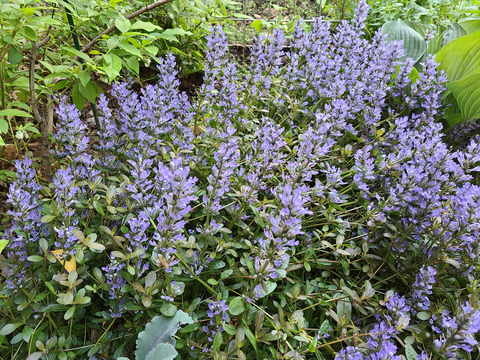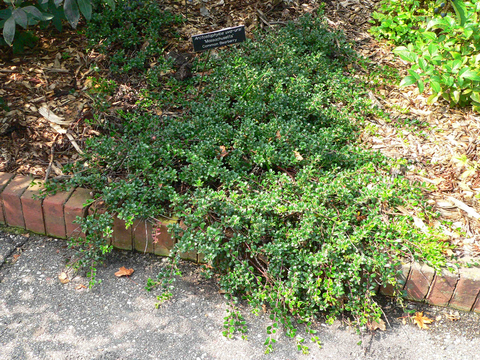“Ground cover” can mean several things. It can be a type of mulch, hardscape materials like patio block, or a growing plant. Ground covers can cover an area of your yard or garden for one season (annuals), a few seasons, or many years.
Plants grown as ground covers can be ornamental or edible, herbaceous or woody, and perennial, biennial or annual plants.
I think if you asked most people why we plant ground covers, they would say to reduce weed pressure or to add beauty. But ground covers can also enhance soil health, provide food and habitat for pollinators and other beneficial insects, and reduce soil erosion.
I have a few ground covers in my yard that have worked out pretty well. One of my favorites is Carex caryophyllea ‘Beatlemania’, common name Beatlemania Spring Sedge or Mop-headed sedge.
Sedges grow in full sun but are also good ground covers for shady areas such as under trees and shrubs. They also are used in restoration projects.
- Sedges grow in cool weather.
- They will grow to about 2 to 18 inches depending on the species.
- They have a mounded to spreading form, and a fine to coarse texture.
- They are adaptable to various soils and have a slow to medium growth rate.
Another favorite ground cover is Ajuga reptans ‘Valfredda’, common name Chocolate chip bugleweed. Hardy in zones 4-9, this ground cover looks particularly good right now in my garden as it’s in full bloom.
- Ajuga cultivars vary in foliage color, size and texture.
- Chocolate chip has purple-green foliage, blue upright flowers.
- It grows to about 6 to 8 inches tall and has a creeping habit, spreading by stolons (underground stems).
- It is adaptable to sun and shade as well as different soil moisture.
- It works well for borders, under trees and in dry conditions along sidewalks and patios.
A ground cover I have yet to try, but plan to, is Arctostaphylos uva-ursi ‘Massachusetts’, common name 'Massachusetts' bearberry. This ground cover is a good choice for encouraging wildlife, for erosion and riparian control, and for rock gardens.
- Hardy to zones 3-5.
- This woody, evergreen ground cover has green/purplish foliage, spring flowers, and a medium texture.
- Its mature size is one foot high and 8 feet wide, so it can cover a lot of ground.
- Plant bearberry in full to part sun.
- It’s a good choice for dry soils on the acidic side.
More ground cover options
- King’s Gold False Cypress (Chamaecyparis pisifera)
- Tom Thumb Creeping Cotoneaster (Cotoneaster aspressus ‘Tom Thumb’)
- Blueberry Delight®Juniper (Juniperus communis depressa ‘AmiDak’)
- Russian Cypress (Microbiota decussata)
- Fire Meidland® Rose (Rosa ‘Meipsidue’)
- Sweet woodruff (Galium odoratum)
- Candytuft (Iberis species)
- Japanese spurge (Pachysandra terminalis)
- Rat-stripper (Paxistima canbyi)
- Sedum, stonecrop (Sedum species)
- Barren strawberry (Waldsteinia ternata)
- Wild ginger (Asarum canadense)
- Bigroot Geranium (Geranium macrorrhizum)
- Strawberry (Fragaria species / cultivars)
- Culinary and ornamental herbs like thyme, oregano, and marjoram
Consider adding ground covers to your landscape as a different way to reduce weeds, prevent erosion, help pollinators and more.
Here are some good resources to help you build your ground cover knowledge:
- Great Ground Covers. Northern Gardener. 16 May 2016.
- Meyer, Mary Hockenberry. Ornamental Grasses for Cold Climates. St. Paul, MN: University of Minnesota Extension Service (2012).
- Meyer, Mary; Brown, Deborah L.; Zins, Mike. The Best Plants For 30 Tough Sites. St. Paul, MN: University of Minnesota Extension (2007).
- Ornamental grasses for shady sites
- Plant Elements of Design plant selection database




